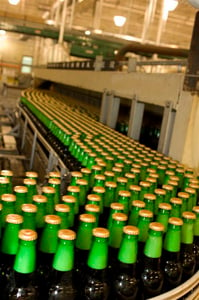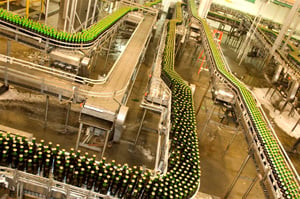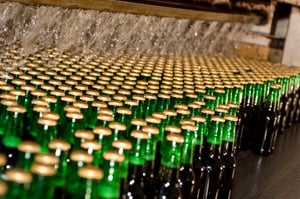
But the Fluke 1735 Three-Phase Power Logger to check the machine's performance. “Because it is a positive-displacement pump, if you know the amount of current draw and the speed that the blower is running, it should be putting out a constant amount of pressure,” he said. “If it's not, then you have a problem. Comparing those factors we could see that we weren't getting the output we should.”
A follow-up test with the Fluke 810 vibration tester identified a bad bearing at the free end of the motor, so Friedman changed out the motor. But problems continued. “When you have two pieces of equipment that are bad, which one is it—is it the blower or the motor?” Friedman said. “It's a chicken and egg situation. After we knew the motor was good, because it was new, we put the 810 on again and it showed that the drive end bearing of the blower was bad.” The issue became one of confidence. Could the 810 be trusted?
“The blower is massive—you can't just say we'll change it and see if it works, because it's not a five-minute job,” Friedman said. “You're looking at five to eight hours of downtime and that's a lot of money...especially if you're wrong. So you have to be pretty confident in your analysis.” The blower bearing was indeed bad, and caused vibration that in turn had damaged the motor.
Calibration times 250
The brewery's 100 large electric motors aren't all Friedman focuses on, of course. Process control at the plant depends on the accuracy of some 250 instruments. “Instrument calibrations, we're proactive about that, instead of waiting until the instrument is way off—it's too late at that point,” Friedman said.

“We use the Fluke 744 Documenting Process Calibrator. That is just a great, great tool that I use extensively,” he said. “It will hook up to a Rosemount or any instrument that is Hart-compatible, that communicates via Hart, which is an instrument protocol. You can view the device's parameters, change the device's parameters. Some devices have a self-diagnostic that you can check the electronic circuitry with, all through this interface. You actually see what the instrument is reading, if it's temperature or pressure.
“From a calibration standpoint we isolate the instrument from the plant process and hook a known constant up to it, like a known pressure. I have Fluke's 700PTP-1 pneumatic test pump. So I'll pump that up to say 100 psi or 20 psi and make sure the instrument is reading exactly that. If not, I have to make some adjustments.”
Friedman also watches over the plant's extensive industrial Ethernet network, using Fluke Networks test instruments to ensure cables and other network elements meet industrial requirements for quality and reliability.
This label spells trouble

A labeling machine is a complex device, and trouble can be hard to track down. “We were having problems with the labeler and it was hard to pinpoint. It was just sporadic problems,” Friedman said. “I just took the Fluke imager out there and shot underneath, where the rotating parts were. It stuck out at me like a sore thumb: the gearbox was over 200 degrees,” he said. “The gearbox was full of water, not lubricant. The seals on the gearbox went, so water was able to penetrate. We changed the gearbox out and all was fine.
“We use Fluke tools, they help us out a lot,” Friedman added. “They're good quality tools and they help us solve problems and that's the bottom line.”
Waiter, another round of Yuengling lagers! How Yuengling Makes a Better Brew
Milled, heated, cooked, pumped, cooled, aged, and filtered—beer and its ingredients are on the move throughout the production process.
- Corn grits and malted barley are transferred to the hoppers. The malted barley is milled to the desired size. The corn grits and part of the malt are combined with water in the grits cooker to be softened and liquefied, the rest of the malt is combined with water in the mash tun, the "cooker mash" is added to the mash tun, and the mashing cycle is complete.
- The liquid (now called “wort”) is separated from the grains. The wort is transferred to the kettle, boiled for sterilization, and hops are added. The boiled wort is then pumped to the hot wort tank and cooled.
- As the wort is transferred to the fermentation cellar, pure cultured Yuengling yeast is added. The yeast converts the sugar in the wort into alcohol and carbon dioxide, while imparting its own special flavors. When the wort has fermented, it is called "beer." The yeast is reclaimed for the next generation of brews, and the carbon dioxide is reclaimed, purified, and later injected back into the beer.
- The beer is pumped through a centrifuge to increase clarity and then cooled to 32 °F (0 °C) before being transferred to the aging cellar. The beer ages for 14 days to increase clarity and allow the flavor to mature.
- The mature beer is cooled again and filtered for clarity, and the carbon dioxide adjusted to insure superior flavor and foaming qualities before the beer is moved to the finishing tanks.
- The beer is then put in bottles, cans, or kegs for customers.